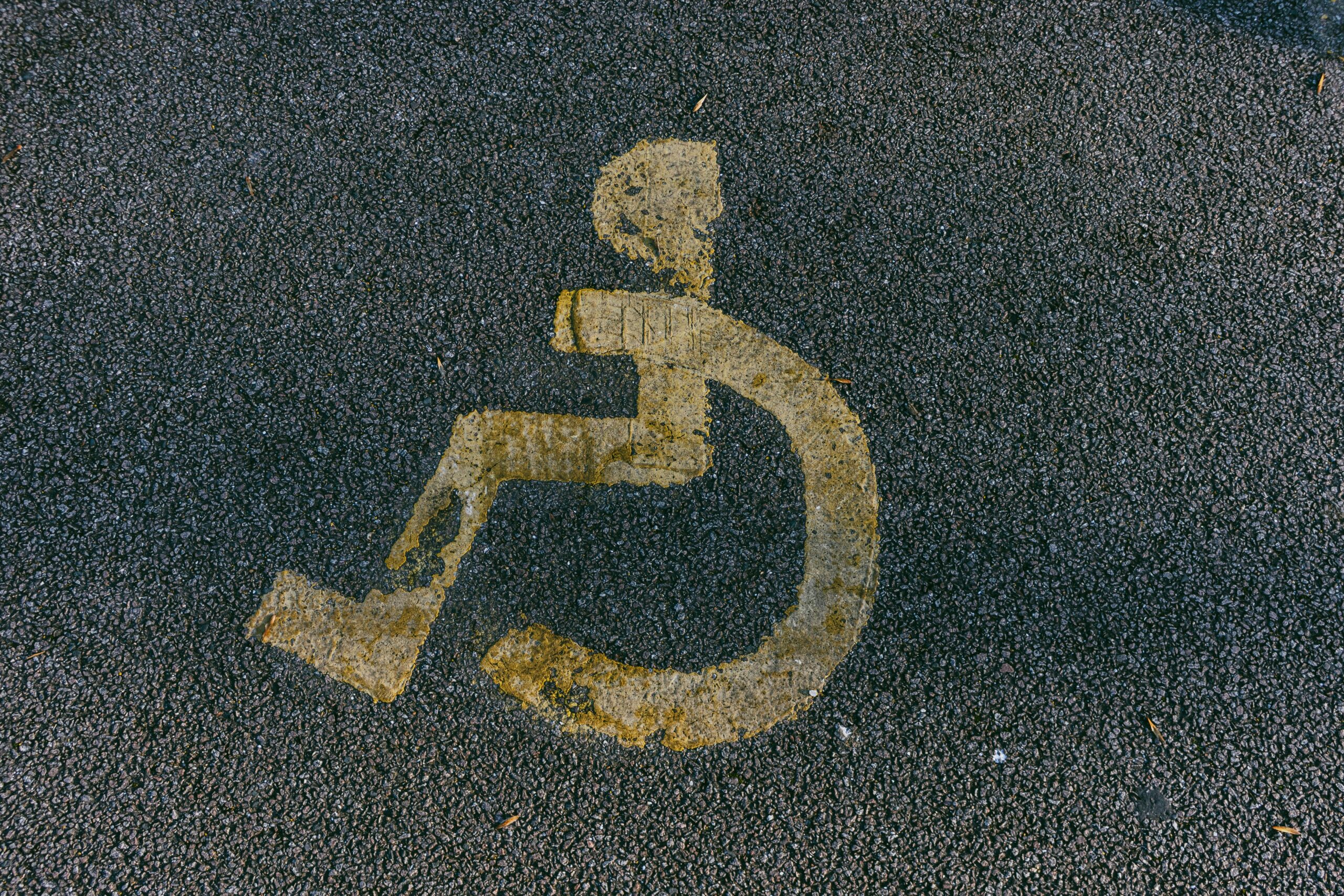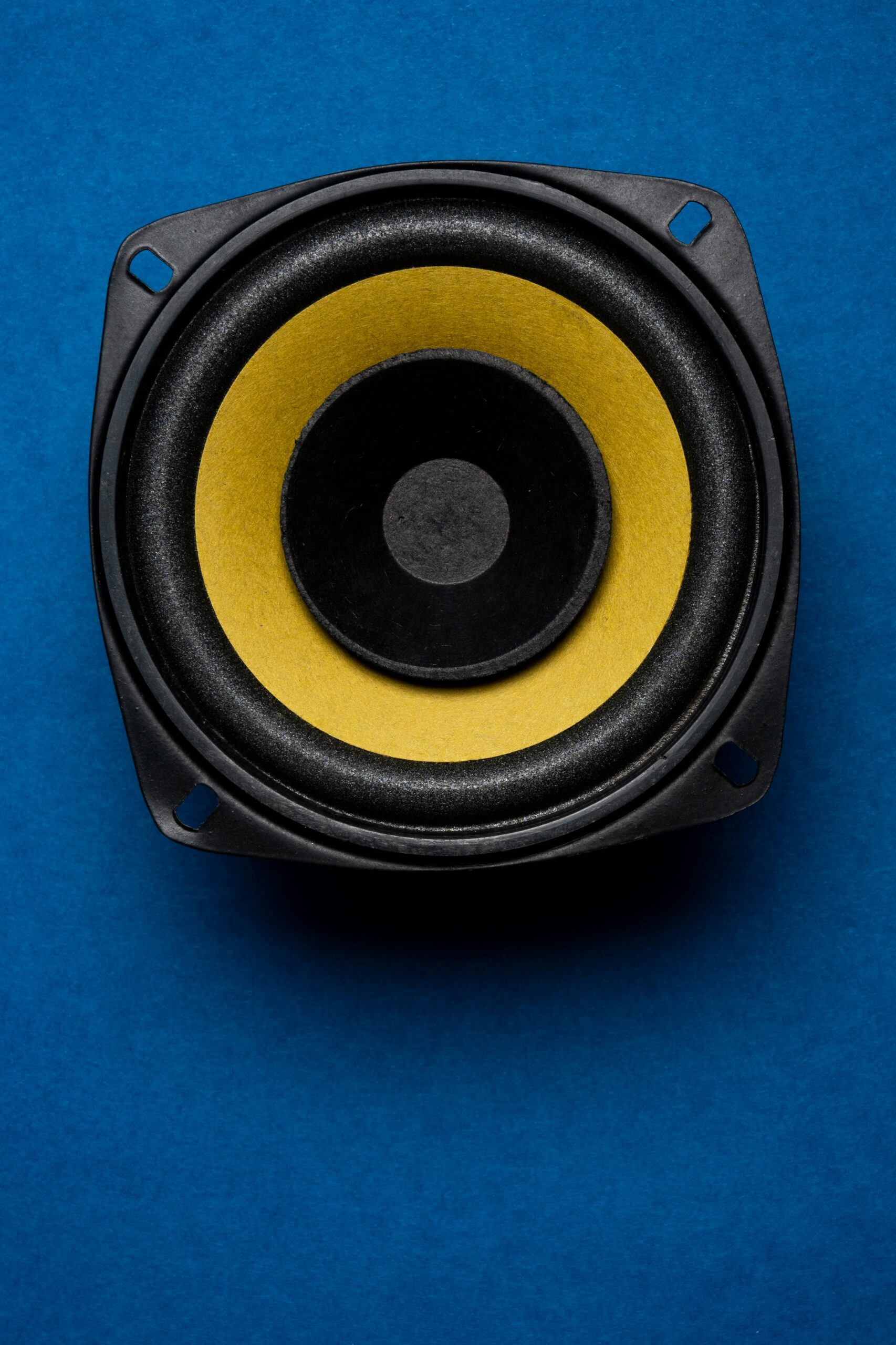Introduction to Accessible TV Remotes
As the population ages, the need for accessible technology becomes increasingly crucial. One of the key areas where this need is evident is in the design of television remotes for the elderly. Traditional TV remotes often feature small buttons, complex layouts, and a multitude of functions that can be overwhelming for older adults. Accessible TV remotes for the elderly are specifically designed to address these challenges, promoting independence and enhancing their viewing experience.
Many seniors encounter difficulty when using conventional remote controls, leading to frustration and discouragement. Common problems include the inability to read small text, the challenge of navigating intricate menus, and the physical strain of pressing tiny buttons. Accessible TV remotes significantly mitigate these issues by emphasizing simplicity and usability. They typically come with larger buttons, clear labeling, and intuitive layouts, making them much easier for seniors to operate. Furthermore, some designs reduce the number of functions to only the essential controls, streamlining the process of changing channels or adjusting the volume.
The importance of accessible TV remotes extends beyond mere convenience; they play a vital role in fostering a sense of autonomy among seniors. By simplifying the remote control experience, elderly individuals can enjoy their favorite shows and movies without relying on others for assistance. This not only enhances their entertainment but also supports their dignity and self-reliance.
In short, accessible TV remotes for the elderly are an essential tool in today’s technology-driven world. They provide a solution to the challenges faced by older adults, ensuring that they can engage with their television comfortably and efficiently. Such advancements in design reflect a growing awareness of the needs of an aging population, driving innovation in the realm of consumer electronics.
Key Features of Accessible TV Remotes
Accessible TV remotes for elderly individuals are designed with specific features that cater to their unique needs, ultimately enhancing their viewing experience. One of the most significant features is the presence of larger buttons. These oversized buttons are easier for seniors to identify and press, reducing the likelihood of errors. The design often includes high-contrast colors, enabling users to distinguish between different functions quickly, which is crucial for those with diminished vision.
Illuminated displays are another critical feature found in accessible TV remotes. For elderly users who may watch television in dimly lit environments, having a remote with a backlit display can significantly improve usability. An illuminated remote allows quick access to controls without straining the eyes, ensuring that switching channels or adjusting the volume is a simple task, regardless of the lighting conditions.
Ergonomics plays a vital role in the design of accessible remotes. Many models are shaped to fit comfortably in the hand, providing a secure grip. This thoughtful design reduces the chances of dropping the remote, which can be particularly advantageous for individuals with reduced hand strength or dexterity. Furthermore, ergonomic remote designs often position buttons within easy reach, minimizing the effort required to operate the device.
Simplified functions are another hallmark of accessible TV remotes for elderly users. By reducing the number of buttons and providing dedicated keys for essential functions, such as power, volume control, and channel selection, manufacturers allow seniors to navigate their remotes effortlessly. This feature helps to alleviate confusion and frustration, making the television experience more enjoyable.
In sum, the key features of accessible TV remotes for elderly individuals – including larger buttons, illuminated displays, ergonomic designs, and simplified functions – collectively contributes to a more user-friendly experience, enabling seniors to maintain their independence and enjoy their favorite shows without complications.
Types of Accessible TV Remotes
When selecting accessible TV remotes for the elderly, it is important to consider the various types available to meet different needs. Understanding the pros and cons of each category can guide you in making an informed choice.
Firstly, basic remotes designed specifically for seniors are often labeled as senior-friendly due to their large buttons and straightforward layouts. These remotes eliminate complex features, allowing users to easily navigate essential functions like power, volume, and channel selection. The simplicity can be a significant advantage for elderly users; however, the downside is that they might lack additional functionalities found in more advanced models.
Universal remotes are another popular option that combines various devices into a single controller. Many of these remotes come with simplified layouts tailored for seniors, featuring enlarged buttons and intuitive design. While they provide the convenience of operating multiple devices, the setup process might be complicated for some elderly users, which can be considered a disadvantage.
Voice-activated remotes represent a more advanced solution, allowing users to interact with their TV through voice commands. Such technology can greatly enhance the viewing experience for elderly individuals who may struggle with fine motor skills. However, the effectiveness of voice recognition can vary, leading to potential frustration if the remote misinterprets commands.
Lastly, smartphone or tablet applications can also be utilized as accessible TV remotes for the elderly. These apps can offer a familiar interface while providing customizable options tailored to specific needs. The downside may be the necessity of having a smart device available, which not all seniors may be comfortable using.
In conclusion, when choosing accessible TV remotes for the elderly, it is crucial to assess the individual’s comfort level with technology and specific requirements. By weighing the advantages and disadvantages of each type, you can select the remote that best enhances their viewing experience.
Top Recommended Accessible TV Remotes for Seniors
When it comes to enhancing the viewing experience for seniors, choosing the right accessible TV remotes for elderly individuals is essential. Here, we present a curated selection of some of the best options available on the market, focusing on user feedback, expert recommendations, and ease of use.
1. RCA Big Button Universal Remote
This remote is designed with large, clearly labeled buttons that make it easy for seniors to operate. It supports multiple devices, making it a versatile choice. Its user-friendly layout and compatibility with various brands allow seniors to switch channels effortlessly. Available at a price range of $10-$15, it can be purchased at most major retailers or online stores.
2. GE Big Button Remote Control
The GE Big Button Remote stands out for its simple design and large keys. The thoughtfully arranged buttons enable easy navigation without confusion. It comes equipped with a backlight feature, offering added convenience in low-light environments. With a price between $15-$20, this remote is another great option that can be found online and in electronic stores.
3. Logitech Harmony 665
For those seeking a high-tech solution, the Logitech Harmony 665 offers smart features alongside its large button design. This remote can control up to 10 devices, making it a powerful tool for tech-savvy seniors. It features a color screen for easy navigation and can be customized for specific user preferences. The typical price for this remote is around $100, available on various online platforms.
4. Fluance Universal Remote Control
The Fluance Universal Remote is particularly suited for seniors looking for simplicity. It provides large, easy-to-understand buttons with minimal clutter. This remote is specially designed for intuitive use, which can be particularly beneficial for individuals with cognitive impairments. Priced between $25-$30, it is often available through Amazon and electronic retailers.
Integrating accessible TV remotes for elderly users into their environment can significantly enhance their viewing pleasure. Each suggested option provides unique features tailored to meet diverse needs. By selecting the right remote, seniors can enjoy their favorite shows with greater independence.
Tips for Choosing the Right Remote
When selecting accessible TV remotes for the elderly, it is essential to consider the unique needs of the user to ensure maximum usability. The first aspect to evaluate is the individual’s level of dexterity. For some seniors, a remote with large buttons and minimal physical strain is ideal. Look for remotes that feature oversized buttons with a contrast color scheme that can aid visibility, making it easier for users to identify the right functions without confusion.
The cognitive ability of the elderly person should also be taken into account. Many seniors may find complicated functions overwhelming. Therefore, choosing a remote with a simple and intuitive layout is crucial. A good option might be a universal remote that consolidates all functions into one accessible device, reducing the need to juggle multiple remotes. Consider those remotes that also offer voice control capabilities, which can significantly enhance the user experience for individuals who might struggle with traditional button pressing.
It is also valuable to involve the elderly person in the selection process if possible. Understanding their preferences, such as specific features they find appealing, can play a fundamental role in their satisfaction with the device. Additionally, some seniors may have a stronger affinity for familiar brands, so choosing a remote from a manufacturer they trust can encourage more effective usage.
Finally, when evaluating accessible TV remotes for elderly users, consider how intuitive the functions are to learn. Opt for models that offer user-friendly instruction manuals, or those that have support resources online. Encouraging seniors to engage with the technology will help build their confidence and foster independence, ultimately increasing their comfort level with the device.
User Reviews and Experiences
User reviews play a critical role in understanding the real-world effectiveness of accessible TV remotes for elderly individuals. Feedback from users and their families sheds light on the challenges faced and the benefits derived from these specialized devices. Many reviewers highlight the ease of use as a significant advantage, noting that simplified designs with fewer buttons help reduce confusion during operation. This is particularly important for elderly users who may struggle with complex technology.
One common theme among reviews is the importance of size and readability. Users appreciate accessible TV remotes that feature large, well-labeled buttons, as these facilitate visibility and tactile feedback. Several reviewers mentioned that remotes designed specifically for seniors have improved their loved ones’ ability to watch television independently. This independence can significantly enhance the quality of life for elderly individuals, as they no longer have to rely on assistance from caregivers or family members for something as routine as operating a television.
A notable point raised by families is the learning curve associated with transitioning to a new remote. Some users experienced initial frustration before mastering their accessible TV remotes; however, most reported that after a brief adjustment period, they felt confident in using their new devices. These testimonials can be reassuring for potential buyers, as they highlight the importance of patience and support during the initial stages of adapting to accessible technology.
In terms of durability, many seniors reported satisfaction with the construction of their remotes. Users mentioned that well-built accessible TV remotes not only improve functionality but also withstand accidental drops or misuse. Overall, the positive experiences shared in these reviews emphasize the benefits of investing in accessible TV remotes for elderly individuals, making it easier for them to enjoy their favorite shows with independence and confidence.
Common Challenges with Accessible TV Remotes
Accessible TV remotes for the elderly are designed to improve the viewing experience for seniors, but they are not without challenges. One significant issue is the difficulty some elderly users may face in adapting to new technology. Many seniors may be accustomed to using traditional remotes, and transitioning to a simplified device can lead to confusion. Often, this demographic may struggle with understanding the layout, functionalities, and features of a new remote. This adaptation difficulty can deter elderly individuals from utilizing these devices to their full potential.
Furthermore, battery life is another common concern. Many accessible TV remotes for elderly users may require frequent battery replacements, which can be cumbersome, especially for individuals who have mobility issues or health conditions that limit their dexterity. Users might face difficulties in accessing batteries or dealing with the intricate battery compartments on some models, making it inconvenient or frustrating when a simple change becomes a complex task.
Fortunately, there are several practical solutions to address these challenges. For technology adaptation issues, thorough training and familiarization sessions can assist elderly users. Caregivers can dedicate time to walk seniors through the features, buttons, and functionalities of the remote, ensuring that they feel comfortable and confident in its use. Additionally, caregivers can create quick-reference guides with clear, large-print instructions tailored to the individual’s needs.
Regarding battery life concerns, caregivers can choose accessible TV remotes that utilize rechargeable batteries or those designed for extended battery life. Furthermore, there are remotes available with larger battery compartments for easier access, minimizing the difficulty associated with battery replacement. By implementing these solutions, users can enhance their experience with accessible remotes, ensuring that they can enjoy their television viewing without undue stress or frustration.
Additional Resources for Seniors and Caregivers
As technology continues to evolve, numerous resources are available to help seniors and their caregivers effectively utilize engaging tools, such as accessible TV remotes for elderly individuals. These resources serve as excellent guides for navigating various devices and understanding their functionalities, empowering seniors to maintain their independence while enjoying their favorite shows and movies.
One of the most valuable online platforms is AARP, which provides a plethora of articles and guides tailored specifically for older adults. These resources often cover various topics, including how to use modern technology, ensuring that seniors can confidently manage their entertainment needs. Furthermore, AARP hosts forums and social media groups where caregivers can share experiences and tips specific to accessible TV remotes for elderly users.
Another excellent resource is Seniors Guides. This website offers easy-to-understand instructional articles and videos demonstrating how to operate specific models of accessible TV remotes designed for seniors. They frequently update their content, providing comparisons of different products to help caregivers make informed decisions.
Community centers often offer classes on technology for seniors. Local libraries or senior care organizations are worth checking for workshops on using devices, including accessible TV remotes for elderly people. These hands-on classes often provide personalized assistance, making technology less intimidating for older adults.
For those who prefer self-directed learning, platforms like YouTube feature videos created specifically for seniors, showcasing a variety of accessible options. Caregivers can help seniors find relevant content by searching for topics like “using TV remotes” or “seniors technology tips.”
By utilizing these resources, seniors and their caregivers can enhance their understanding of technology, ensuring a more enjoyable and user-friendly experience with accessible TV remotes for elderly individuals.
Conclusion: Enhancing Independence Through Technology
In recent years, the importance of accessible technology has gained significant attention, particularly regarding the design and functionality of TV remotes for the elderly. Technology, when crafted with consideration for the needs of older adults, can greatly enhance their quality of life. Accessible TV remotes for elderly users not only simplify interaction with their television but also empower them to enjoy their favorite programs independently.
Key features of these remotes, such as larger buttons, simplified layouts, and voice control options, directly address common challenges faced by older individuals. By integrating these features, manufacturers not only cater to the physical limitations that may arise with age but also encourage a more enjoyable and engaging viewing experience. The accessibility provided through these technological advancements facilitates autonomy, enabling seniors to manage their entertainment choices without assistance.
Furthermore, the impact of accessible remotes extends beyond mere functionality. These devices can foster a greater sense of connection and engagement with loved ones and the broader community. Television remains a popular avenue for information and social interaction; hence, when seniors are equipped with tools that allow them to participate actively, their overall well-being is significantly improved.
Encouraging dialogue around experiences with accessible TV remotes is crucial. Readers are invited to share their insights or suggestions in the comments section below, as collective knowledge can drive future innovations. As we continue to advance technology, our commitment should remain steadfast towards designing solutions that prioritize the needs of the elderly. Ultimately, accessible TV remotes represent not simply a convenience, but a vital step toward enhancing independence and enriching the lives of older adults.



